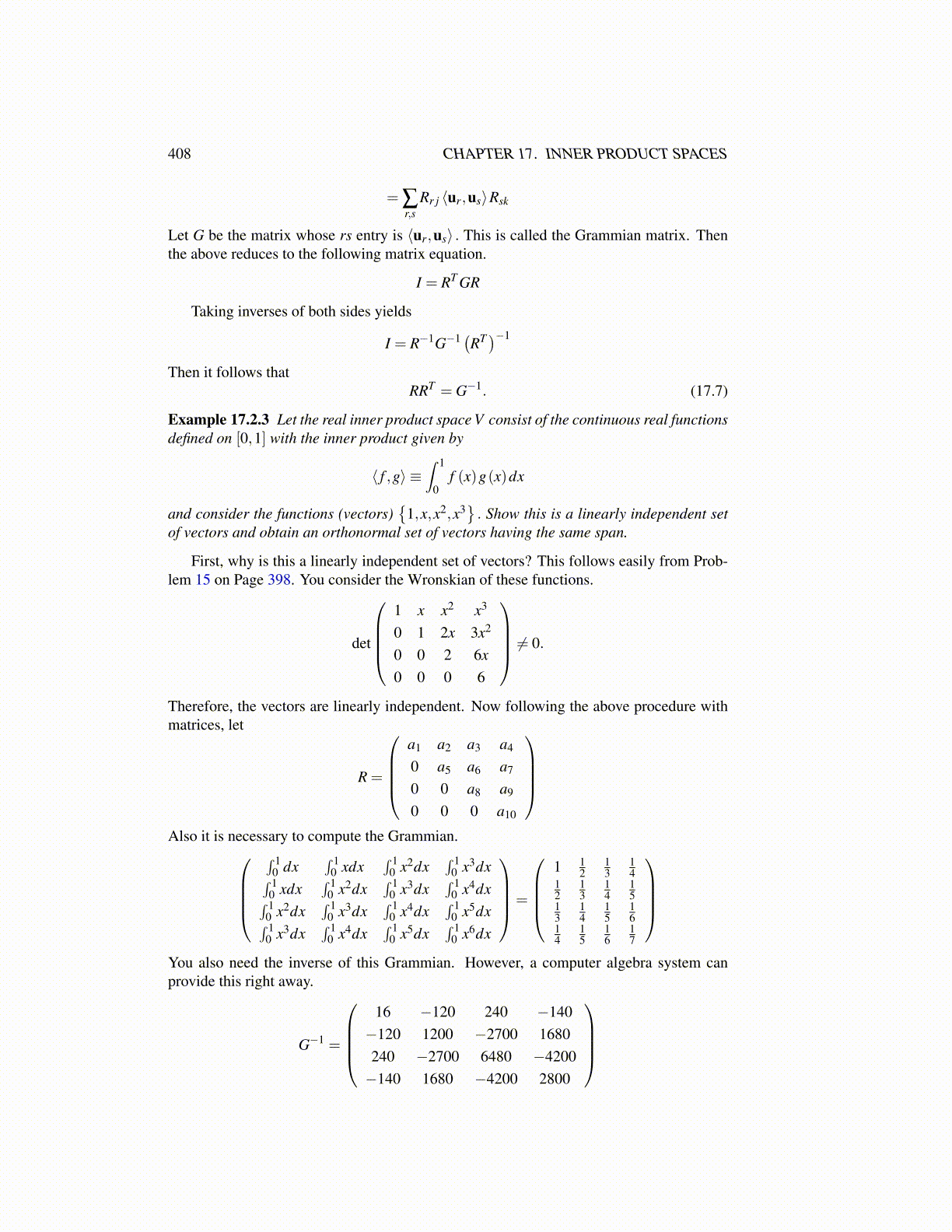
408 CHAPTER 17. INNER PRODUCT SPACES
= ∑r,s
Rr j ⟨ur,us⟩Rsk
Let G be the matrix whose rs entry is ⟨ur,us⟩ . This is called the Grammian matrix. Thenthe above reduces to the following matrix equation.
I = RT GR
Taking inverses of both sides yields
I = R−1G−1 (RT )−1
Then it follows thatRRT = G−1. (17.7)
Example 17.2.3 Let the real inner product space V consist of the continuous real functionsdefined on [0,1] with the inner product given by
⟨ f ,g⟩ ≡∫ 1
0f (x)g(x)dx
and consider the functions (vectors){
1,x,x2,x3}. Show this is a linearly independent set
of vectors and obtain an orthonormal set of vectors having the same span.
First, why is this a linearly independent set of vectors? This follows easily from Prob-lem 15 on Page 398. You consider the Wronskian of these functions.
det
1 x x2 x3
0 1 2x 3x2
0 0 2 6x0 0 0 6
̸= 0.
Therefore, the vectors are linearly independent. Now following the above procedure withmatrices, let
R =
a1 a2 a3 a4
0 a5 a6 a7
0 0 a8 a9
0 0 0 a10
Also it is necessary to compute the Grammian.
∫ 10 dx
∫ 10 xdx
∫ 10 x2dx
∫ 10 x3dx∫ 1
0 xdx∫ 1
0 x2dx∫ 1
0 x3dx∫ 1
0 x4dx∫ 10 x2dx
∫ 10 x3dx
∫ 10 x4dx
∫ 10 x5dx∫ 1
0 x3dx∫ 1
0 x4dx∫ 1
0 x5dx∫ 1
0 x6dx
=
1 1
213
14
12
13
14
15
13
14
15
16
14
15
16
17
You also need the inverse of this Grammian. However, a computer algebra system canprovide this right away.
G−1 =
16 −120 240 −140−120 1200 −2700 1680240 −2700 6480 −4200−140 1680 −4200 2800